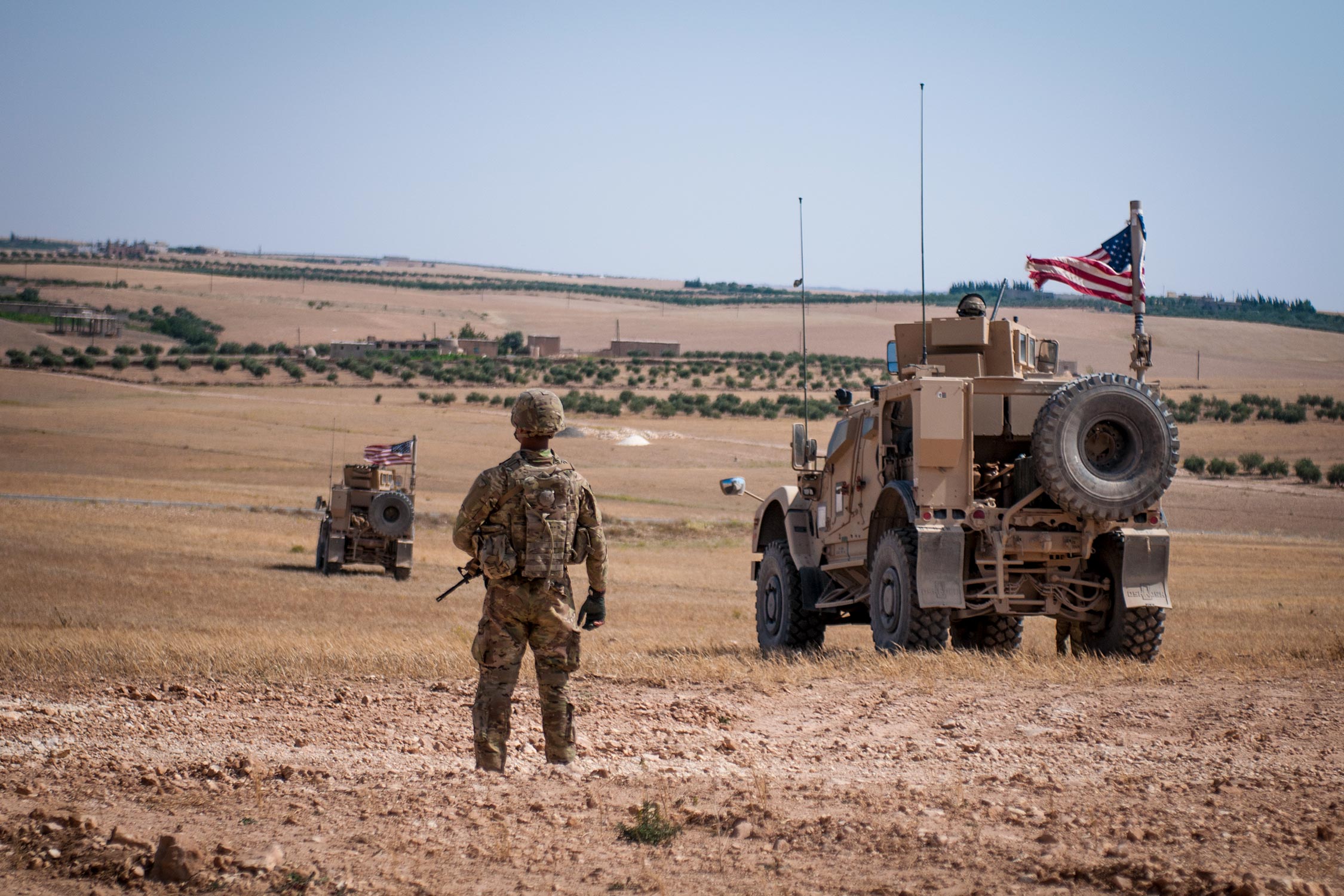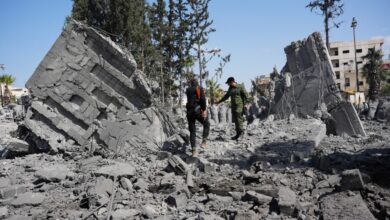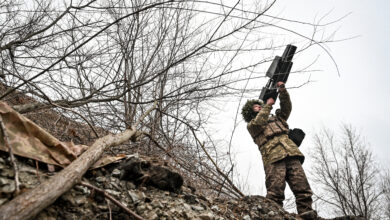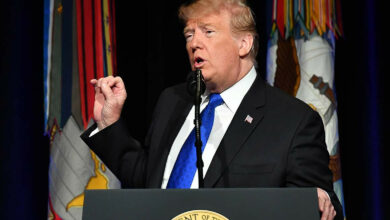US will withdraw troops from Syria
U.S. President Donald Trump has decided to pull U.S. forces currently deployed to Syria in the Coalition against Islamic State from the country, according to a White House statement and sources.
The Wall Street Journal first reported that Trump was withdrawing U.S. troops from northeastern Syria.
U.S. officials began notifying their partners in northeastern Syria of the plan after the Pentagon was given an order to remove U.S. forces as soon as possible, WSJ reported on Wednesday, December 19.
“We have started returning United States troops home as we transition to the next phase of this campaign,” the White House said in a statement.
“The United States and our allies stand ready to re-engage at all levels to defend American interests whenever necessary.”
The White House statement claimed the U.S. had “defeated the territorial caliphate.”
U.S. officials are trying to persuade Trump not to commit to a deadline for the pullout of American troops.
Ambassador James Jeffrey, the State Department Special Representative for Syria Engagement said on Wednesday that the Coalition had wanted to wait for the State of the Union address but Trump wanted the announcement out immediately.
“It isn’t what anyone was contemplating, people were pushing for a much longer presence,” Jeffrey told military officials.
Syrian Democratic Council Co-Chair Amina Omar told The Defense Post that the council had not been notified by the U.S. about a troop pullout.
At least 2,000 U.S. troops are believed to be in Syria where they work with the Syrian Democratic Forces in the northeast and the vetted Syrian opposition group Jaysh Maghawir al-Thawra (MaT) in the south.
During a conference call on Wednesday, David M. Satterfield, acting Assistant Secretary of State for Near Eastern Affairs, told U.S. officials that the State Department would not “walk away from” the SDF.
A source familiar with operations in the region told The Defense Post that the withdrawal would include the U.S. military base at At Tanf near the Syria-Jordan border, where MaT is.
Trump on Wednesday tweeted: “We have defeated ISIS in Syria, my only reason for being there during the Trump Presidency.”
We have defeated ISIS in Syria, my only reason for being there during the Trump Presidency.
— Donald J. Trump (@realDonaldTrump) December 19, 2018
“The Coalition has liberated the ISIS-held territory, but the campaign against ISIS is not over,” Department of Defense spokesperson Dana White said in a statement.
“We have started the process of returning U.S. troops home from Syria as we transition to the next phase of the campaign. For force protection and operational security reasons we will not provide further details. We will continue working with our partners and allies to defeat ISIS wherever it operates.”
Earlier, the Pentagon said in a statement attributed to spokesperson Colonel Rob Manning that “At this time, we continue to work by, with and through our partners in the region.”
It was unclear whether the rest of the multinational forces that make up the Coalition against Islamic State would remain in Syria.
Rukban refugees
The withdrawal may put at risk lives of up to 50,000 people who live in the notorious Rukban camp, a barren no man’s land on the Jordan-Syria border.
The residents of the camp have been suffering from the lack of food, clean water and medical care. On December 13, the U.N. Children’s Agency UNICEF said two babies died of illness at the camp within a week.
At the moment, Rukban residents are protected from Syrian troops by the Tanf military base, which lies 18 km (11 miles) from Rukban.
However, the protective presence of the base is now under question.
Fadwa Baroud, a U.N. spokesperson in Syria, told The Defense Post that the agency is still getting ready to send a new convoy with humanitarian aid to the camp. In November, the U.N. and Syrian Arab Red Crescent were able to deliver humanitarian aid to Rukban for the first time in 10 months.
“The U.N. in Syria is preparing for a second convoy to provide winterization support and fill gaps identified during the mission, including protection, shelter, health, education and food assistance. In addition, a second vaccination campaign is needed to target children in Rukban and surrounding areas,” Baroud said.
“We are ready to dispatch a second convoy but are currently waiting for the approvals and security guarantees to proceed,” she added.
So far no clear plans have been formed to carve out a safe passage for the residents of the camp, and those who do not want to return to rebel or regime-held territory remain in limbo.
A power vacuum in Syria
The withdrawal of U.S. forces could also leave a power vacuum in Syria with Russia, Iran and Turkey remaining and vying for control of the war-torn country and the SDF, led by the mostly Kurdish People’s Protection Units (YPG) holding significant territory in the north and east.
An SDF spokesperson did not immediately reply to a request for comment.
“President Trump is putting the cart before the horse, because ISIS has not been defeated in Syria,” said Nicholas A. Heras, Middle East Security Fellow at the Center for a New American Security.
“Turkey does not have a capable force that can bring local stability in northern and eastern Syria anytime in the near future, and is solely interested in carving out a border zone in the areas east of the Euphrates that it can use to suppress the Kurds,” Heras told The Defense Post.
Earlier this week, Turkish President Recep Tayyip Erdogan said Ankara could launch a new operation against the YPG “within days.”
The YPG is considered by the Turkish government to be inextricably linked to the outlawed Kurdistan Workers’ Party (PKK), which has waged a decades-long insurgency in Turkey, and is designated as a terror group by Turkey and its Western allies.
But the YPG is not a proscribed organization in the United Kingdom, United States or European Union, and it is a key component of the Coalition-backed SDF alliance which is waging the campaign against ISIS in Syria.
If the U.S. pulls out without carefully planning for the aftermath, “the only viable alternative to the SDF to combat ISIS would be the Assad government and its allies, especially Iran and its Hezbollah Network militias,” Heras said.
“His decision would either allow ISIS reemerge, or provide Iran with solid control over the entire arc of the Levant from Baghdad to Beirut.”
Trump’s decision seemed to be at odds with other U.S. officials, including his national security advisor, John Bolton, who has said that the U.S. would remain in Syria to counter Iran.
As recently as last week, Brett McGurk, the U.S. special envoy to the Coalition, said: “We have obviously learned a lot of lessons … so we know that once the physical space in defeated, we can’t just pick up and leave. So we’re prepared to make sure that we do all we can to ensure this is enduring.”
On Monday, Jeffrey said the U.S. has three goals in Syria: “First is the enduring defeat of ISIS. We’re well on our way to seeing that happen. The problem is ISIS will come back if the underlying conditions are receptive to that kind of ideological movement, and that requires us to deal with the other two, not only to keep ISIS from coming back, but again because in the world of great power and regional competition they’re very important.”
Jared Szuba contributed reporting from Erbil and Anna Varfolomeeva from Washington, D.C.












